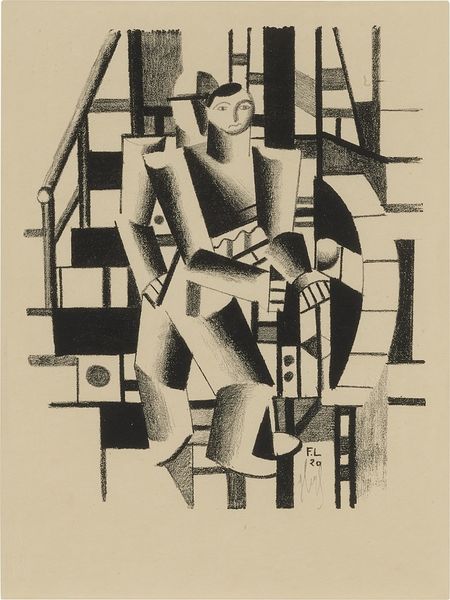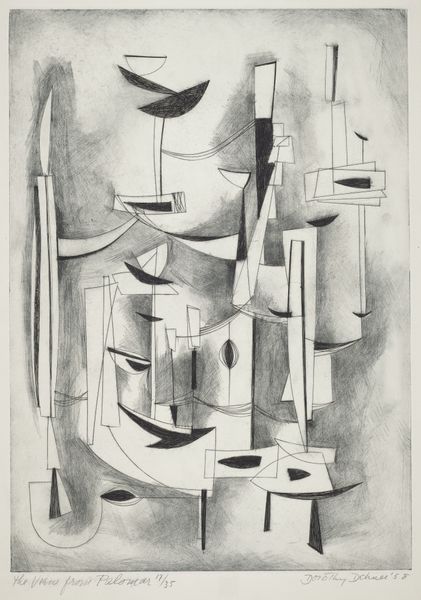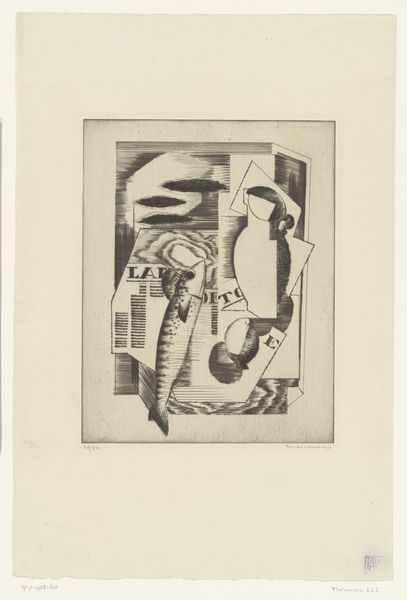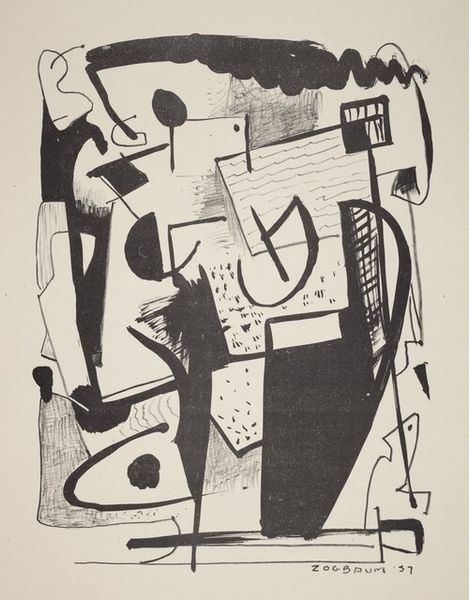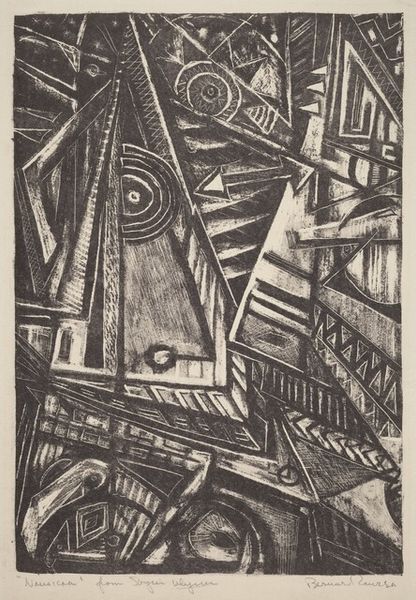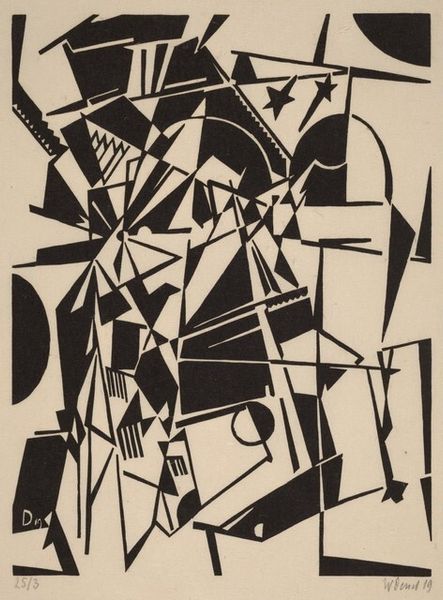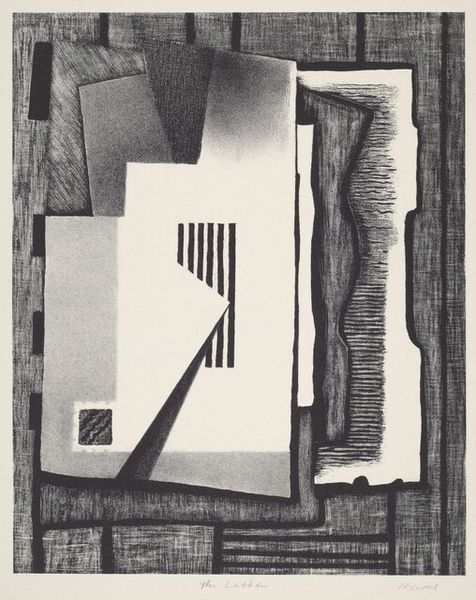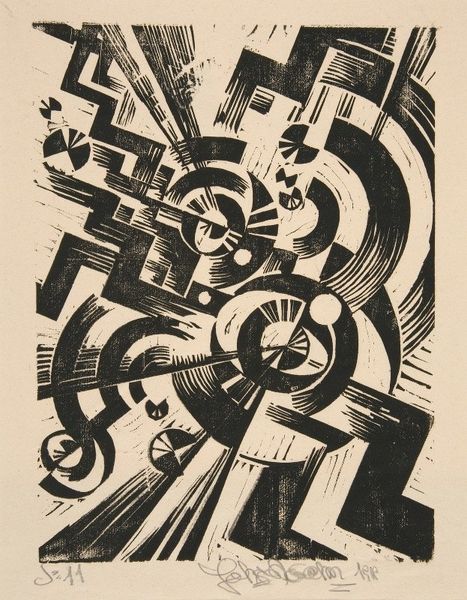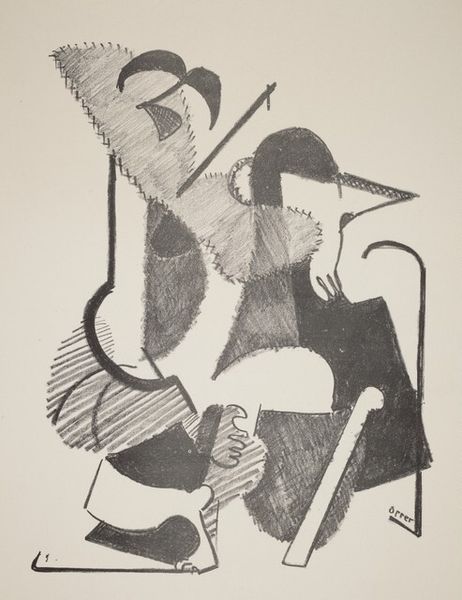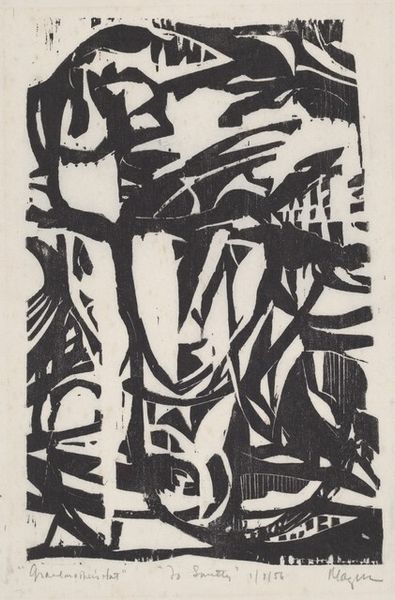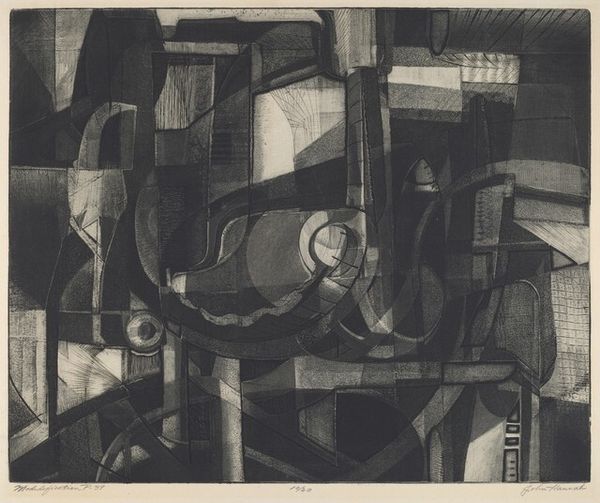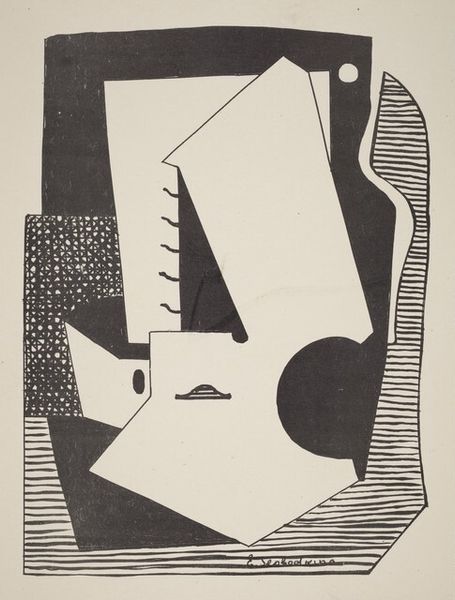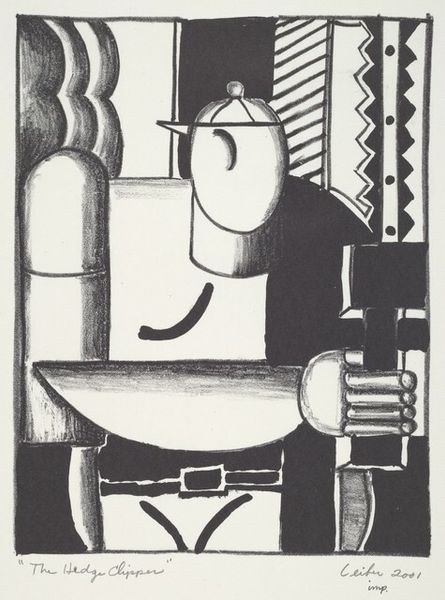
drawing, print, ink
#
drawing
# print
#
figuration
#
ink
#
geometric
#
abstraction
#
line
#
modernism
Dimensions: Image:198 x 130mm Sheet:303 x 234mm
Copyright: National Gallery of Art: CC0 1.0
Editor: So, here we have Hananiah Harari's "Untitled (Abstract)" from 1937, an ink drawing, seemingly a print too. It's giving me strong cubist vibes, and yet… I can almost make out a figure in it. How would you interpret this work, given the time it was created? Curator: This piece is fascinating, especially considering the socio-political climate of 1937. The rise of totalitarian regimes in Europe was putting pressure on artists to conform to more realistic, representational styles, art that served a political purpose. So, what do you think the choice to embrace abstraction signifies here, particularly for an artist working in America but influenced by European modernism? Editor: Perhaps it was a subtle form of resistance? An insistence on artistic freedom against the constraints being imposed elsewhere? A sort of claim to a non-figurative public art? Curator: Exactly! Abstraction, while seemingly apolitical, became a powerful statement. Artists like Harari, even working outside the immediate pressure zones, were contributing to a larger discourse on individual expression and intellectual liberty. Think about how exhibitions were curated during that period. Do you believe they highlighted or perhaps subdued this kind of “resistance”? Editor: That's a great question. I imagine curation played a crucial role – perhaps either legitimizing the art within an "avant-garde" context or unintentionally diluting its subtle rebellious undertones by displaying it alongside other, less politically charged pieces. It seems like this period in American art history really emphasizes that museums do a lot more than "display" art! Curator: Precisely. Understanding that institutional role—how art is framed, discussed, and given meaning—is key to unlocking the deeper complexities within seemingly straightforward abstract works. Museums actively write art history and play into a bigger art market. What new details about art curation do you believe might be found from the art historical context here? Editor: I hadn't really thought about it that way. Seeing it now, "abstract" art may sometimes hold quite overt political views. Curator: It certainly provides food for thought, right? To consider the political power art has through means beyond its explicit representation. Editor: Definitely changes my perception of modernism!
Comments
No comments
Be the first to comment and join the conversation on the ultimate creative platform.
